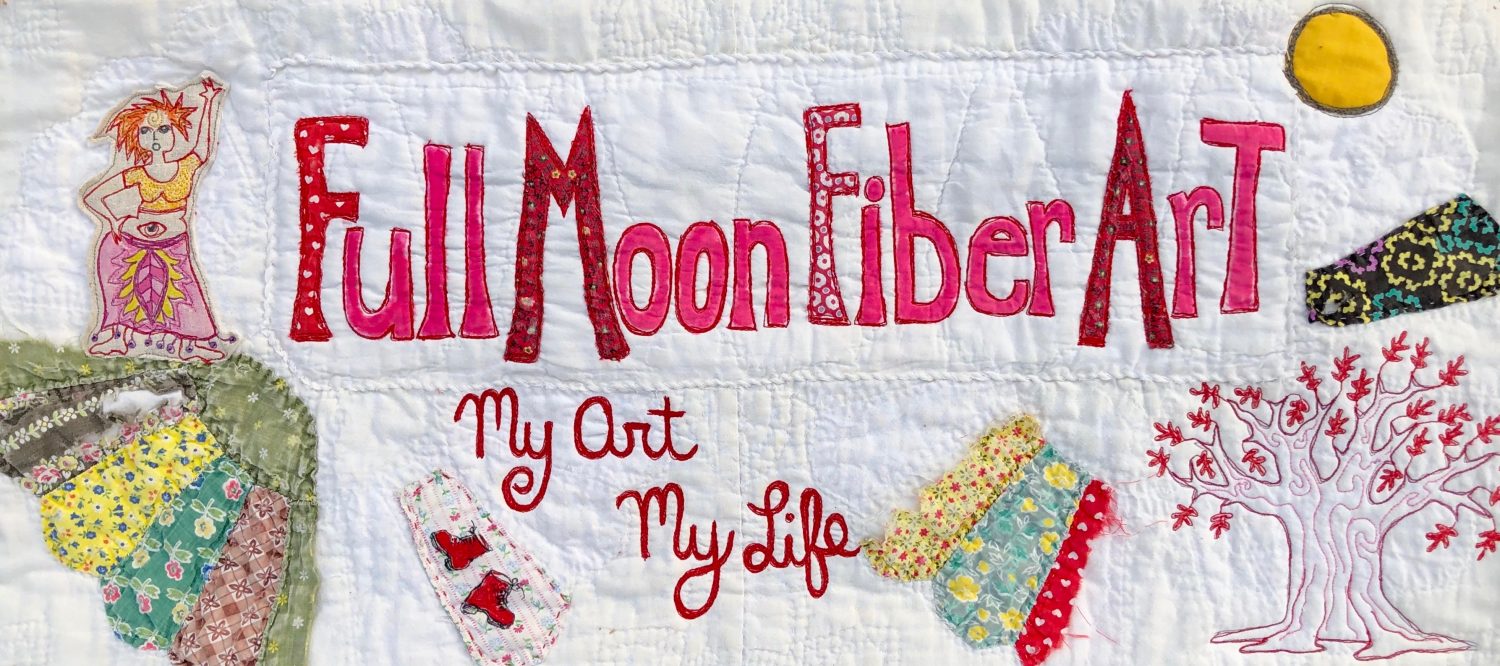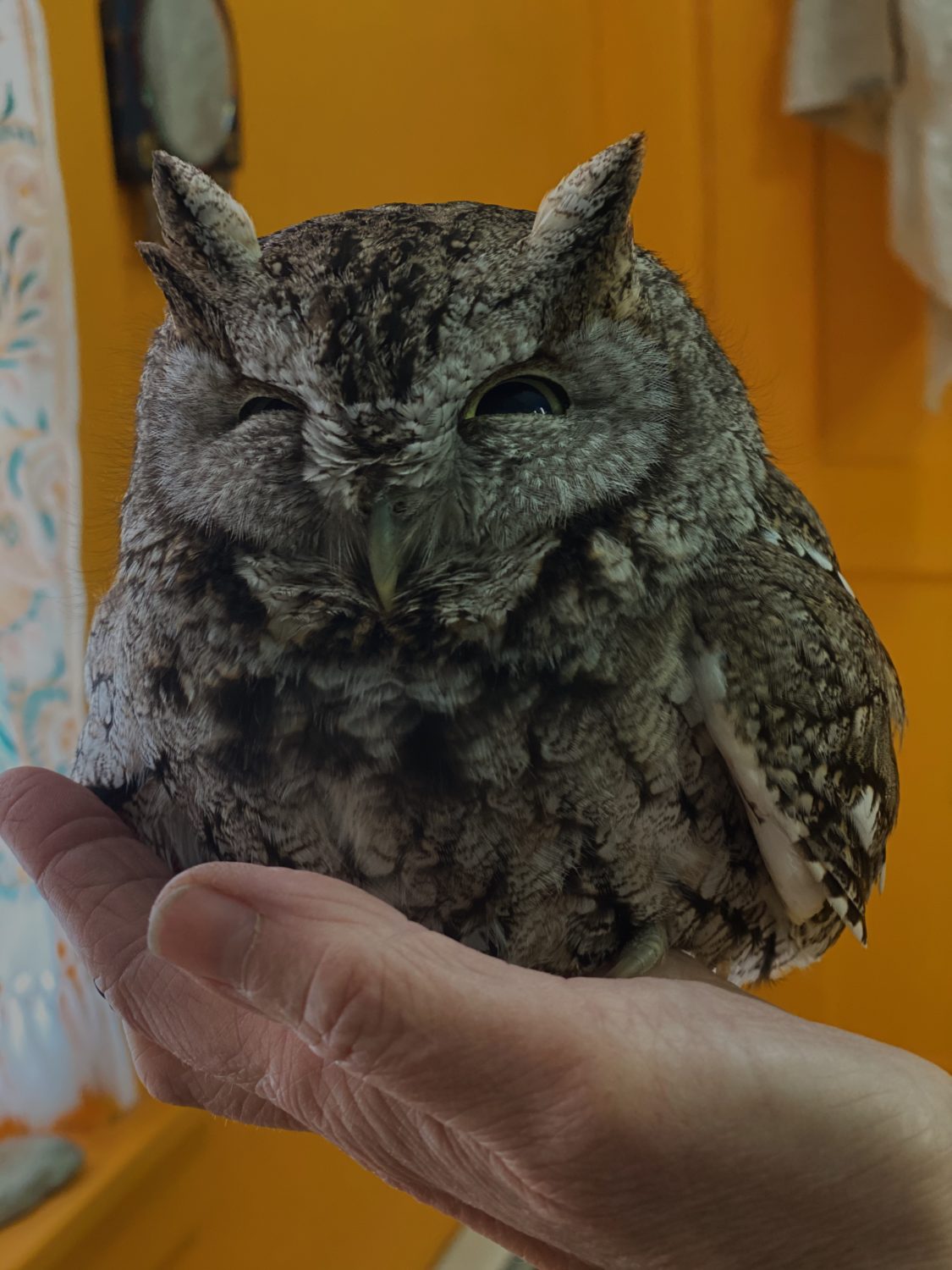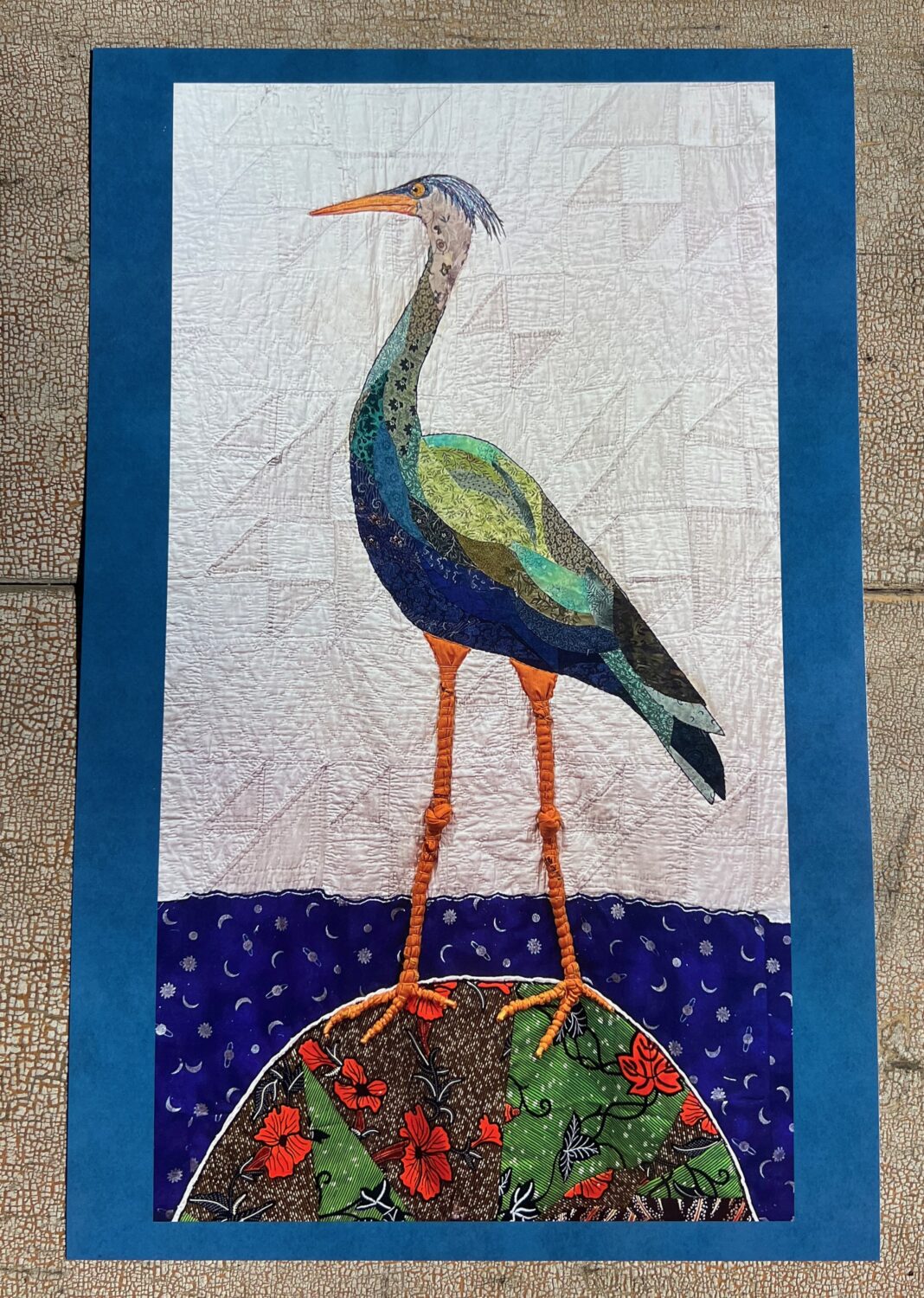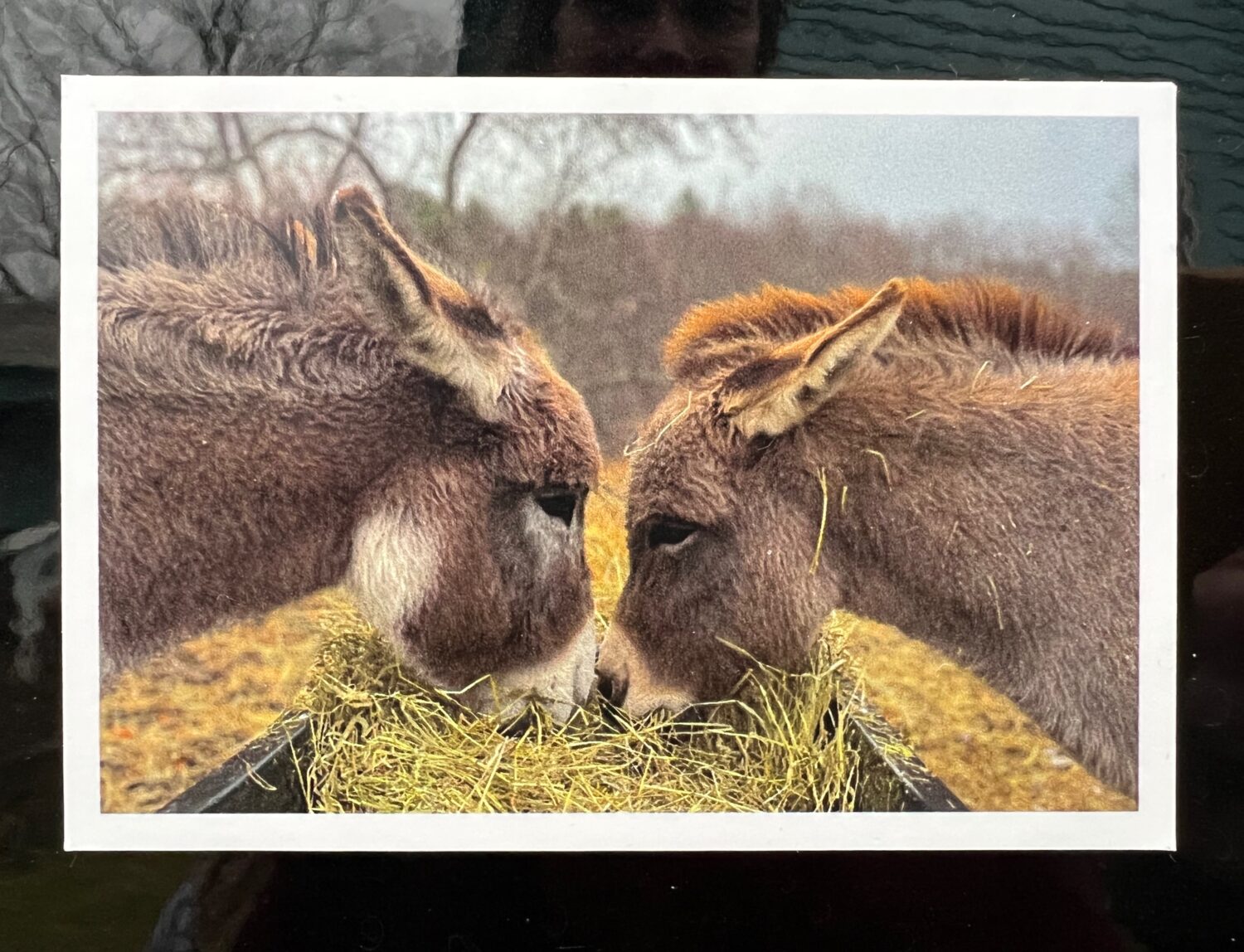
Since nothing, absolutely nothing was happening in my studio, I decided to go for a walk in the woods.
But I didn’t want to go on my neighbor’s path that I’ve been walking lately. I needed to get off the path and into the woods. I was craving wandering without knowing exactly where I was going.
I wanted to go to The Orphaned Woods.
I hadn’t been to the woods behind the farm since the grasses and bushes grew so tall I couldn’t get through them early in the summer. This year I didn’t mow a path as I had the past couple of years. To get from the farm to the woods, I’d have to hack my way through the tall grasses and bushes while getting covered in ticks at the same time.
So I loaded Fate and Zinnia into my car and drove to the path that would take me to the woods that connects to The Orphaned Woods.
As if in affirmation, as soon as I stepped off the path into the woods, I saw the Barred Owl flying from one tree to another. Then I saw the bird, which I think was a bluejay, chasing it. I watched for a while, as the blue jay squawked and the owl silently moved out of its way, without giving up ground.
When the owl vanished from my view, we headed up the hill towards the Orphaned Woods.
“I missed you”, I said out loud as I stepped over the stone wall into the woods, my heart softening.
I visited the Big Old Hickory and the Maple with the broken branch. I squatted down to get a close look at the many mushrooms with taking a picture of them. Zinnia splashed through the small pond created when a Shagbark Hickory uprooted last summer.
Fate led the way back to the farm, but I called the dogs back as the bushes started to get thick. We had to go home the way we came.
The woods get by fine without my visits. I had the feeling they had to adjust to my coming back. Or maybe it’s that I felt as if I were a bit of a stranger. Because I didn’t get to see the gradual changes that the summer brings, a part of me expected the woods to look as I last saw them in the late spring.
Now that I’ve been, I know I’ll want to go back again before the path from the farm is clear enough for me to walk it.
Wandering those woods was just what I needed to bring myself back. To empty my mind of the voices and ideas that have been lodged there. I think mostly that what I let go of was my own expectations of myself and what I should be doing.
Jon calls it recharging the creative self.
That’s a good way of thinking about it. A letting go, so I can start again.












































